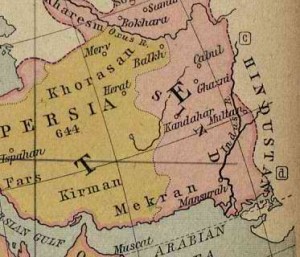About Kamut
From some time it is at the top of the charts: the most talked about, the more sold, the most expensive of all. It is part of the Kamut® family of ancient grains, those which over the years have not undergone intervention of selection by man. But things by know about the Kamut are so many.
Let’s start by correcting a very common misconception: Kamut® is not the name of a grain, but rather a registered trademark (just like Barilla or Coca-Cola) owned by the American company Kamut International, founded in 1990 by Bob Quinn. the cereal erroneously known under this name is a
subspecies of Triticum turgidum (durum wheat), Triticum turgidum the turanicum, a tetraploid wheat with good nutritional properties and characteristics that make it particularly suitable for bakery (its seeds are very resistant to cooking). A detailed description of this cereal appeared for the first time
in the scientific literature in 1921 and it seems that its origin is linked to an Iranian region where is still growing and from which takes the generic name for wheat or wheat eastern Khorasan.
The entire production of Khorasan sold under the brand Kamut® is a wholly owned subsidiary by the International Kamut®: wheat is grown in the states of Montana (United States), Alberta and Saskatchewan (Canada) from where it is then exported in various countries around the world, imported and milled only from authorized companies and mills.
All products with this symbol are, of course, sold under specific license issued by the Kamut International. A sophisticated marketing operation that has led consumers to associate the name Kamut to the Khorasan wheat and research “products Kamut® rather than grain products Eastern Khorasan wheat or, if you prefer. In practice, today in Italy, any farmer can cultivate wheat Eastern Europe, but can not, for obvious reasons, call Kamut®. It so happens that the consumer purchases at the supermarket noticed packs of wheat flour produced two steps distance from home, while those who are unaware of these issues buy the same meal, but “signed” Kamut®, at a price much higher in organic stores . That bag of flour bought at the organic shop is on the same shelf of other foods that come from fair-trade, eco-friendly and Km 0: to get there flour Kamut®, however, has crossed the ocean! It could be argued that even other organic products and eco-friendly available in these stores come from overseas, just think of coffee or cocoa. It is true
however, that these products, due to specific environmental conditions, can not be cultivated in Italy.
The lucky monopoly of Kamut International has relied in the past on the legend of the Egyptian origins of this cereal. It is said that an American pilot, immediately after the second World War II, founded an handful of seeds in an ancient Egyptian tomb. Landed in Montana, the seeds were planted by a farmer and miraculously flourished. Years later, the precious seed came into the hands of the Quinn family, who made a successful crop. Bob Quinn
decided to make that lucky cereal recognizable by associating it with an Egyptian name. So it was that in the 1990, after having consulted a dictionary of Egyptian hieroglyphics, Quinn recorded the name Kamut.
This charming legend is almost certainly an invention. Today we know that the Khorasan originates in the range between Anatolia and the Iranian plateau. From there it spread in throughout the eastern Mediterranean where it survived thanks to the production of small farms.
Moreover, the germination of wheat decline after a few decades and is therefore unlikely that the seeds can take root after thousands of years, as the legend would have us believe. While not less, this fanciful invention served beginning to stimulate interest in something ancient, pure and uncontaminated. Today Kamut International has distanced itself from this story and justifies the use of the brand with the need to provide greater assurance to consumers their products contain the ancient and pure Khorasan wheat varieties, grown according to organic farming methods and with high quality standards.
Let us finally of the aspects that relate to the use of this cereal in the diet. comparing the nutritional values of Khorasan with those of wheat, jump out a few differences. the grain Khorasan has, compared to durum wheat, a higher content of protein and fat, as well as a lower percentage of carbohydrates. Just be careful not to fall into the trap of believing that a minor amounts of carbohydrates render based foods Khorasan less energy. It is true indeed that
increased fat causes an increase in total calories. Precisely for this reason, the consumption of this type of wheat is recommended for people who practice sports or have a very active life. Even the glycemic indices are different than the traditional wheat amounted to around 85 points, that of Khorasan around 45 What makes this cereal particularly suited to diets hypoglycemic. Large, relative to durum wheat, is also the contribution of
vitamin E, selenium, zinc and magnesium. In contrast, however Khorasan contains, compared to regular wheat, a really small percentage of fibers and, above all, a higher percentage of gliadins (gluten proteins), which makes it absolutely unsuitable for coeliacs.
From “Il Giornale del Cibo”






Leave a comment